AncestryDNA vs. 23andMe: Which is better?
Both 23andMe and AncestryDNA have something to offer everyone.
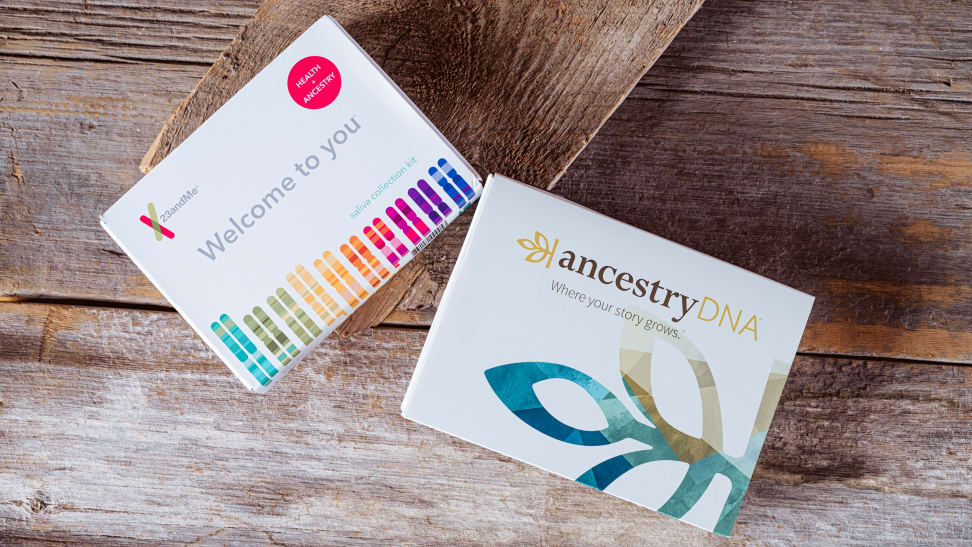 Credit:
Reviewed / Jackson Ruckar
Credit:
Reviewed / Jackson Ruckar
Products are chosen independently by our editors. Purchases made through our links may earn us a commission.
If you’ve been looking into tracing your ancestry, you might have discovered that it’s a little overwhelming in the technological world we live in. While people of days past had to rely on historical records and paper trails, people today can trace their roots using mail-in DNA samples from companies like AncestryDNA and 23andMe.
I’ve always been interested in figuring out where my family comes from, especially considering neither of my parents know who their fathers are. Missing those pieces of my family tree has always left me wondering where those lines of my ancestry lead, so I decided to test 23andMe and AncestryDNA myself to see how similar the results are and to help other people figure out which company is right for them.
What AncestryDNA offers
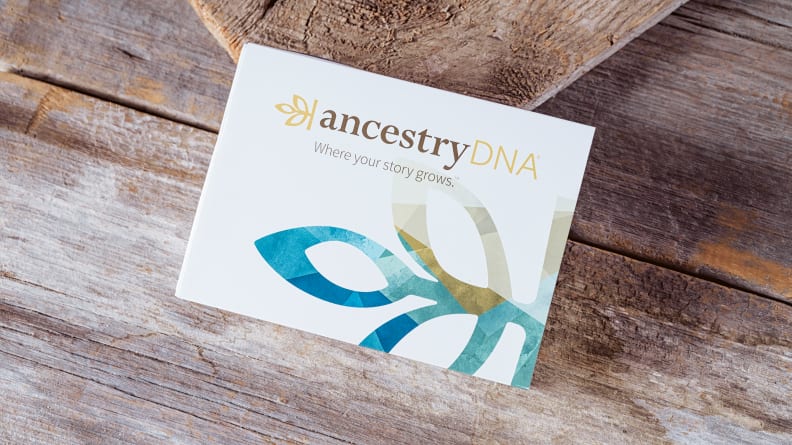
AncestryDNA sends everything you need in a compact package.
AncestryDNA was one of the first major companies to offer mail-in DNA tests for analysis, and the company currently offers two different testing kits: AncestryDNA and AncestryHealth. With AncestryDNA, “results include information about your geographic origins across 1,000+ regions and identifies potential relatives through DNA matching to others who have taken the AncestryDNA test.”
We've written a lot about AncestryDNA. Our shopping editor Courtney Campbell tried out both the AncestryDNA kit and the AncestryHealth one (this has since been discontinued). We've written in-depth about how to make your own family tree, and even whether your sibling needs to take a DNA test if you've already taken one (spoiler alert: they do).
The basic AncestryDNA package is regularly $99, and for $1 more you can add a 3-month World Explorer Membership to access over 20 billion records on the site to build a detailed family tree. For $20 more, you can add on the “traits” package to see how your genes might influence personal factors like earlobe type, hair loss, and sensitivity to bitterness.
Once you have your DNA results, you can easily find other people in the Ancestry community who could be close or distant relatives, and those matches are constantly updating as more people take the tests. Taking your DNA results and building and updating your family tree is one of the main benefits of AncestryDNA over its competitors. Currently there are over 18 million people in Ancestry’s database, the largest consumer DNA network in the world.
How to take the AncestryDNA test
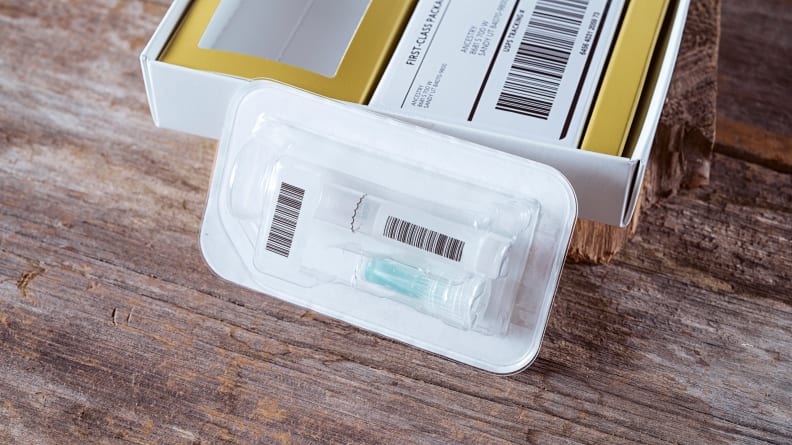
Submitting your DNA to Ancestry is as easy as spitting in a tube.
Providing a DNA sample is extremely easy. Once you receive your AncestryDNA kit you simply fill the test tube with the saliva to the line and screw on the cap which releases a fluid designed to preserve the DNA into the tube. Then you shake it up, seal it in the envelope, and send it back following the prepackaged return mailer.
Once you’ve sent in a test, results will arrive within six to eight weeks, though processing times vary.
My AncestryDNA results
I took my original AncestryDNA test a few years back while doing research to figure out my lineage. I did not test AncestryHealth and I did not upgrade to the traits package. According to the results — which have been updated since the original test in 2015, but with very, very minor changes — my “ethnicity estimate” shows 45% England and Northwest Europe (primarily England), 34% Scotland (primarily Scotland and Northern Ireland), and less than 10% Sweden, Ireland, and Wales.
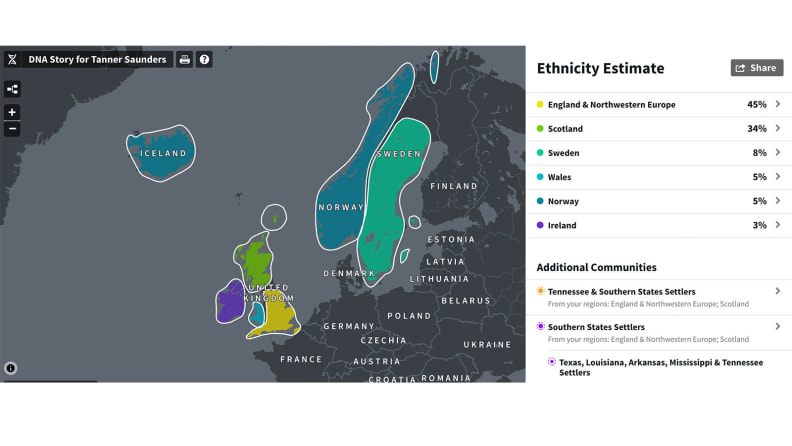
AncestryDNA map of my ancestors.
None of this really shocked me, but what I found more interesting was the “additional communities” feature, which shows colored portions of a U.S. map detailing where different settler communities ended up. I grew up in Texas and my family, as far as I know, has been rooted there. These maps, paired with detailed timelines, helped me see how people with similar DNA moved from Europe to the United States, and ultimately settled around the country, making their way to Texas.
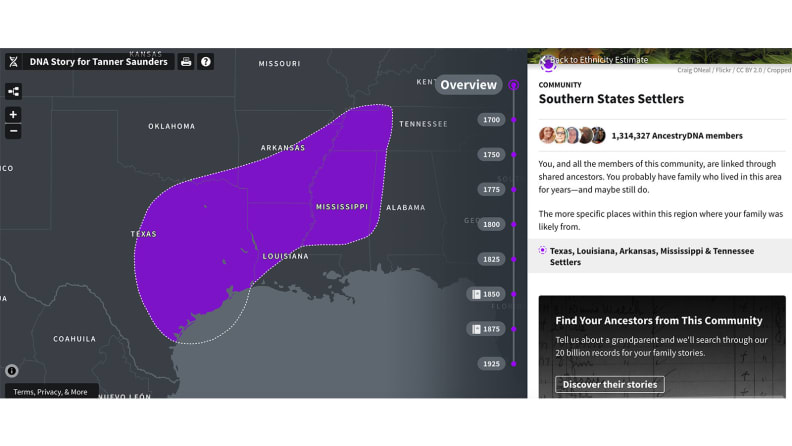
AncestryDNA map.
A section of the AncestryDNA profile page offers DNA matches, which for me offered over 1,000 people who could potentially be a 4th cousin or closer. Clicking through these profiles is a fun experience because you can see people who simply took the test and moved on or those who took the test and are actively working to build a family tree. The website will help you explore people’s various family trees to search for a connection, and you can even reach out to people who might be potential relatives through the website’s messaging portal.
You can also participate in online surveys to help Ancestry grow its offerings while comparing your answers to people like you. These questions range in things from your entertainment habits to sleeping patterns and more.
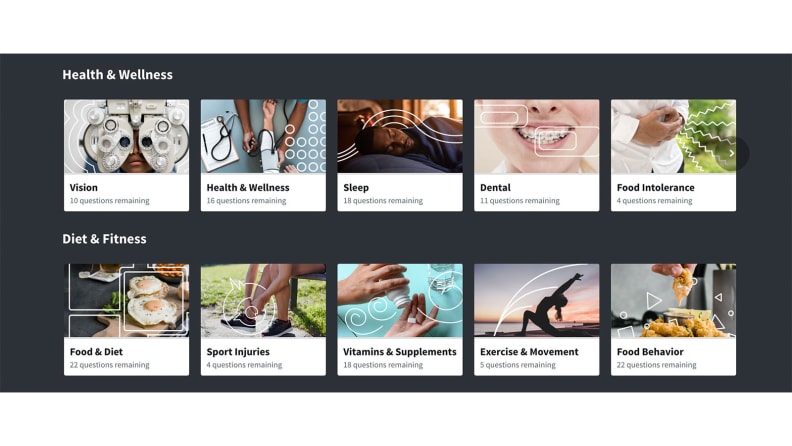
Take surveys to help provide more accurate results and build a better understanding.
Was AncestryDNA worth it?
When I originally opted in for AncestryDNA a few years back, it gave me exactly what I wanted: a clearer view of where my family came from. Not knowing who either of my blood grandfathers are meant that, for all I knew, I could trace my roots back anywhere. Ultimately I loved the map features on my DNA Story page. But the best part of AncestryDNA is being able to take the results and keep working with them to build a family tree. I did this for a while, having previously built a family tree, but after a while found that it was something I just wasn’t that interested in exploring further. If you are interested in really exploring your ancestry further — by researching records and relationship-building — than just knowing where your DNA says you’re rooted, then AncestryDNA is for you.
What 23andMe offers
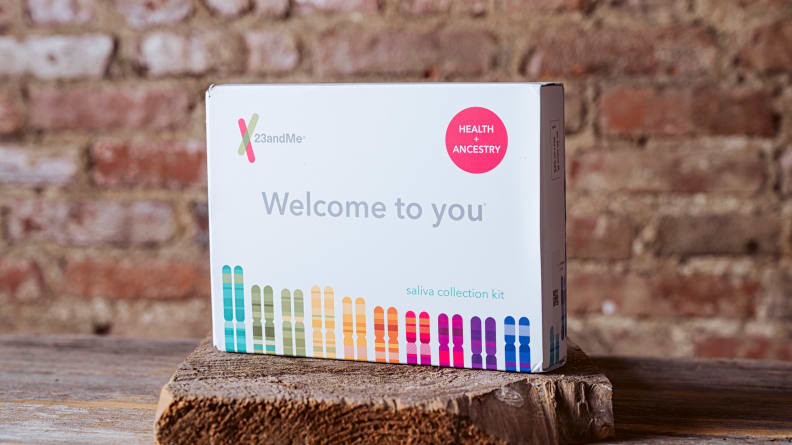
23andMe comes in a standard small box.
23andMe, which has been around since 2006, offers three different genetic testing options: Ancestry + Traits Service, Health + Ancestry Service, and VIP Health + Ancestry Service. Having sold over 12 million DNA kits around the world, 23andMe say it’s a company “built on science” and is dedicated to “bring science to our customers and help them use it in meaningful ways.” It also claims that its ancestry test is “the most complete genetic breakdown on the market, and the most comprehensive portrait of you yet."
-
Ancestry + Traits: This package gives users access to over 50 reports spanning over 2,000 researched areas, this includes Ancestry Composition, Ancestry Detail Reports, and even Maternal and Paternal Haplogroups to trace your roots back thousands of years. It also includes the DNA relative finder (which you can opt in or out of), and an automatic family tree builder.
- Health + Ancestry Service: This kit includes everything mentioned above plus a bunch of reports relating to your predisposition to diseases like Type 2 Diabetes and Late-Onset Alzheimer’s Disease, 40 +carrier status reports for conditions like Cystic Fibrosis and Sickle Cell Anemia, and more than five wellness reports that look at issues like genetic weight and lactose intolerance.
- VIP package: This suite gives everything mentioned above in the other two packages but with a few perks like priority lab testing for faster results, dedicated personal support, and a 1-on-1 walkthrough of your DNA results with one of the company’s experts.
All of the packages also come with a Traits Report to see over 30 potential traits like male bald spot and unibrow. It also gives you access to your raw data and the option to share the reports available to you with friends and family for comparison. With 23andMe, you can upgrade from the basic ancestry package to the health option easily using the DNA sample you’ve already provided for $125.
How to take the 23andME DNA test

The process for submitting DNA through 23andme is similar to Ancestry's.
Taking your actual DNA test is quick and easy, in my experience. Once you get your kit you register it — I used the handy mobile app — to tell the company who you are. Then you simply fill up the test tube with your saliva, close the lid and toss the funnel, and then place it in the pre addressed return mailer and ship it off. To help with privacy, the return package has no personal information about your or your DNA.
23andMe says its DNA processing takes two to three weeks after receiving the saliva sample. Using the app, notifications are sent every step along the way, which I found exciting and reassuring, knowing that my sample made it to the lab and was going through different processing and testing steps.
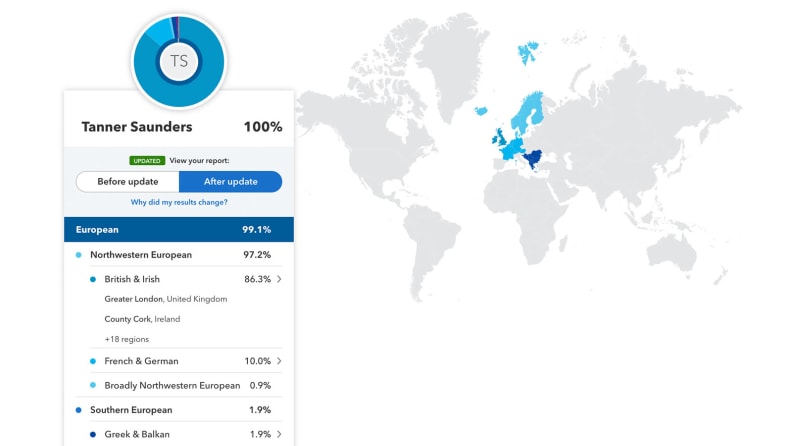
23andMe Map
My 23andMe Ancestry + Traits Results
For this review I only participated in the Ancestry + Traits DNA test, and not the Health services. It’s not shocker, but 23andMe reports that my ancestry is 99.1% European, being made up of 86.3% British, 10% French and German, and 1.9% Southern European. The Ancestry Composition map is a nice tool that shows where your traits are located, but what I really enjoyed about 23andMe is that you can click further into your results to see much more specific areas than just the country as a whole. For example, it was able to tell me that in the last 200 years my DNA puts me in common with people in the Greater London area and Merseyside (which I later learned is Liverpool).
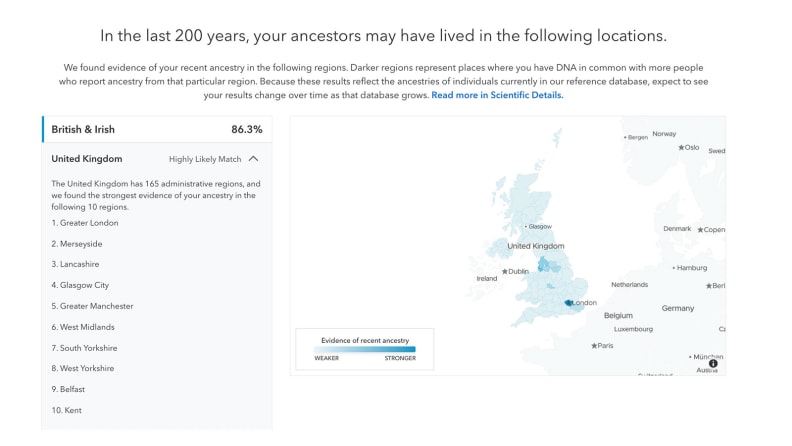
Each company gives detailed information for review.
The Ancestry & Traits Dashboard on its own is a fun page to look around without having to click into anything. Just a quick glance told me that 64% of my relatives are less likely to be vegetarian. But it’s also easy to navigate to find what you are looking for.
As I mentioned before, part of the reason I wanted to do this test in the first place was to try to find the paternal lines of my ancestry, since I don’t actually know the bloodline. 23andMe has an easy-to-access report on paternal and maternal haplogroups, which helps trace the migration of ancestors after they “ventured out of eastern Africa” and moved in different groups around the globe. What grabbed me is that “your paternal haplogroup can reveal the path followed by the men of your paternal line.” While I don’t need to walk you through my great, great, great, X10,000 grandfather’s history, I can tell you that my results claim that me and Alexander Hamilton shared a common ancestor who lived in Europe 5,000 years ago.
The traits results are fun to click through, but in my opinion don’t offer you too much useful information because you probably already know your traits. The stats are still fun, though, like reading that there’s a 68% chance I won’t have hair loss or thinning before 40 (phew!) and a 90% chance I have sticky, wet earwax. (To be fair, I didn’t know there were different types!)
23andMe also has a DNA Relatives tool to help you connect with people who you might be related to. I personally found this feature to be a little lack-luster. You’re presented with a list of names and circles (that include a picture if this person has built out their profile). While you can search the list — mine had over 1,500 people — to find people by name or place, there really isn’t much guidance on what to do with the information. Exploring one person’s profile that was high on the list according to how likely we were to be related I did find that this potential 2nd cousin had a grandmother from a town close to mine. From there I can “confirm” and add to my family tree, but I don’t actually know her and a confirmation could only be made by communicating with her or using records, which aren’t part of 23andMe’s platform.
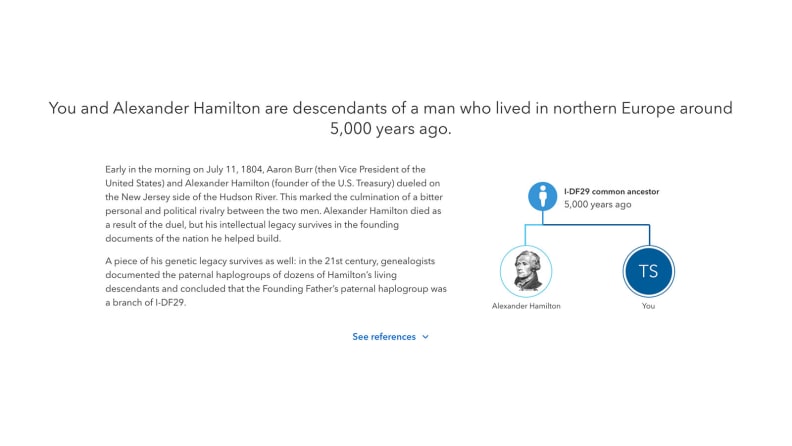
Find out your relatives are.
23andMe also offers, through the dashboard, options to hire an outside genealogy expert from LegacyTree to help you build your family tree or take your data and print in a hardcover book to easily present your data and information to friends and family (or give as a gift to remind someone how lucky they are to have your complex and highly-intricate being in their life).
Was 23andMe worth it?
Again, the basis of taking tests for me — and probably most people who use them — is to learn a little something about your ancestry. And 23andMe did exactly that. I was able to get the baseline information I was looking for and feel satisfied with the results. For me, however, the entire experience with 23andMe felt fun and like I was really on a journey to learn about myself. From the ease of the sampling experience to the functionality and design of the website and app, I really enjoyed the experience.
I was slightly disappointed in 23andMe’s DNA Relative List, but to be honest that wasn’t something I was really looking for in the long run. What I did want to know was simple: where do I come from? And the maps and features provided with 23andMe’s basic kit really broke that down for me in a fun and well-designed way.
How do AncestryDNA and 23andMe compare?
These two companies are both leaders in their field, and from my own experience, will give you a solid set of baseline information relating to who you and your ancestors are and where they came from. From there, though, each company has their own pros and cons, depending on what experience you want to have.
Cost
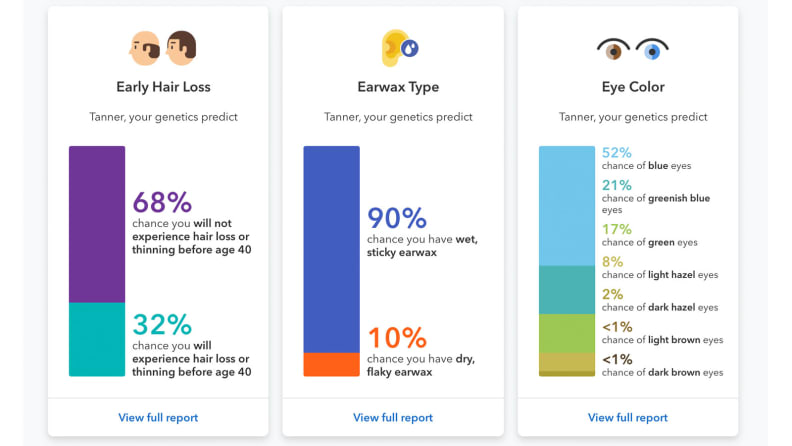
23andMe Traits
In terms of cost, we have to consider both full-price and sale prices, as well as the addition of traits. 23andMe normally retails for $99, as does AncestryDNA. I’d argue that 23andMe is the better deal here, because the entry package includes traits analysis where AncestryDNA does not (that will cost another $20). Though it’s important to remember that AncestryDNA makes it easy to upgrade. And if you truly don't care about learning your traits, you may want to skip it altogether.
But if you can snag AncestryDNA on sale, it's a much better investment for the cost, especially since the traits add-on only costs $10.
Winner:
- Full-price: 23andMe
- Sale price: AncestryDNA
Ancestor roots
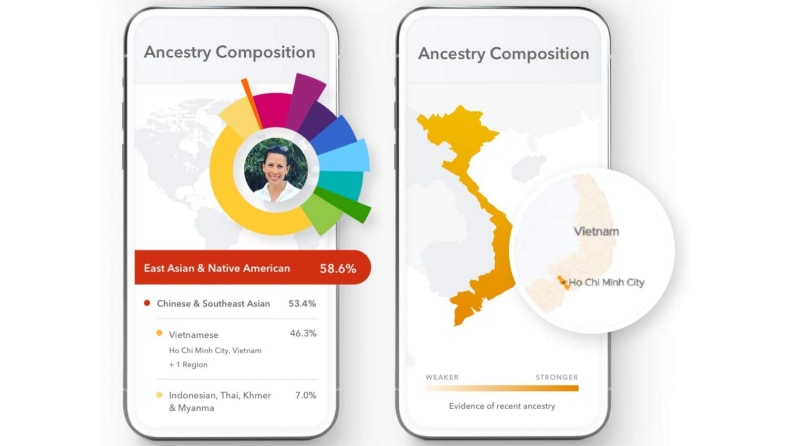
Both 23andMe and Ancestry have robust maps you can explore.
Both companies gave me very similar results on where my ancestors are from, roughly that I’m 80% to 90% from British and Irish. On this front, I found that 23andMe was the winner in helping me understand where my family came from and who they were by simply analyzing the data and information presented to me. Clicking around the maps on 23andMe gave me more detailed information and painted a more detailed, specific picture.
Not that AncestryDNA didn’t also present a nice picture, it just felt a little more abstract than what I was hoping for. I also found myself getting lost in the extra information on 23andMe more. For example, after reviewing details about my British and Irish heritage the mobile app kept leading me to more articles where I ultimate was able to spend a morning reading about the Stone Age, reading about the fashion of Savile Row, and even being shown British words and Airbnb’s to someday plan a trip to my ancestral land.
Winner: 23andMe
Family history
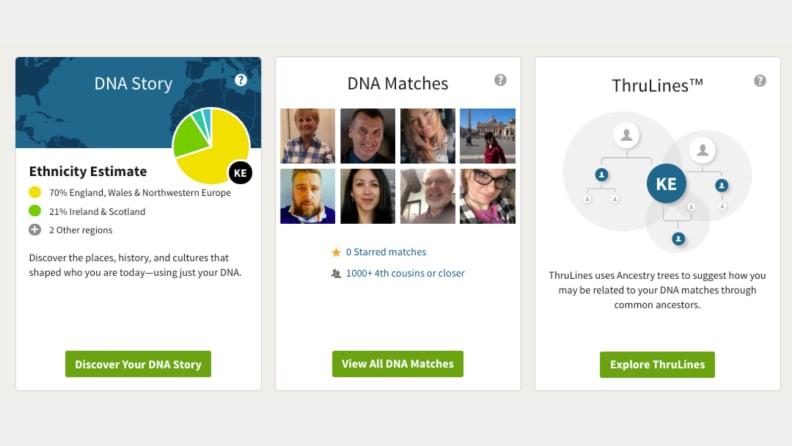
Once you’ve built a tree on Ancestry, you unlock the ThruLines feature.
AncestryDNA is the better option for people looking to truly delve into their history. If you’re interested in taking your DNA results and doing more, a World Explorer membership means you can access thousands and thousands of public records to build a much clearer and detailed picture of your family. For me, I don’t know the names of two people in my direct family tree — and never will — so that’s not really an option, but if it was I know I’d be very interested in working out those details on Ancestry. Our editors who have explored these features swear by them, noting that the family trees are incredibly fun to build and the process of record finding is very rewarding.
Winner: AncestryDNA
I know I’m glad to have tried both experiences, and am excited to see how my results are more fine-tuned as science and technology advance.
